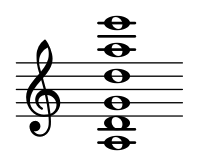I recently ran across a tweet from Allen Downey saying
So much of 20th century statistics was just a waste of time, computing precise answers to useless questions.
He’s right. I taught mathematical statistics at GSBS [1, 2] several times, and each time I taught it I became more aware of how pointless some of the material was.
I do believe mathematical statistics is useful, even some parts whose usefulness isn’t immediately obvious, but there were other parts of the curriculum I couldn’t justify spending time on [3].
Fun and profit
I’ll say this in partial defense of computing precise answers to useless questions: it can be fun and good for your career.
Mathematics problems coming out of statistics can be more interesting, and even more useful, than the statistical applications that motivate them. Several times in my former career a statistical problem of dubious utility lead to an interesting mathematical puzzle.
Solving practical research problems in statistics is hard, and can be hard to publish. If research addresses a practical problem that a reviewer isn’t aware of, a journal may reject it. The solution to a problem in mathematical statistics, regardless of its utility, is easier to publish.
Private sector
Outside of academia there is less demand for precise answers to useless questions. A consultant can be sure that a client finds a specific project useful because they’re willing to directly spend money on it. Maybe the client is mistaken, but they’re betting that they’re not.
Academics get grants for various lines of research, but this isn’t the same kind of feedback because the people who approve grants are not spending their own money. Imagine a grant reviewer saying “I think this research is so important, I’m not only going to approve this proposal, I’m going to write the applicant a $5,000 personal check.”
Consulting clients may be giving away someone else’s money too, but they have a closer connection to the source of the funds than a bureaucrat has when dispensing tax money.
Notes
[1] When I taught there, GSBS was The University of Texas Graduate School of Biomedical Sciences. I visited their website this morning, and apparently GSBS is now part of, or at least co-branded with, MD Anderson Cancer Center.
There was a connection between GSBS and MDACC at the time. Some of the GSBS instructors, like myself, were MDACC employees who volunteered to teach a class.
[2] Incidentally, there was a connection between GSBS and Allen Downey: one of my students was his former student, and he told me what a good teacher Allen was.
[3] I talk about utility a lot in this post, but I’m not a utilitarian. There are good reasons to learn things that are not obviously useful. But the appeal of statistics is precisely its utility, and so statistics that isn’t useful is particularly distasteful.
Pure math is beautiful (and occasionally useful) and applied math is useful (and occasionally beautiful). But there’s no reason to study fake applied math that is neither beautiful or useful.




